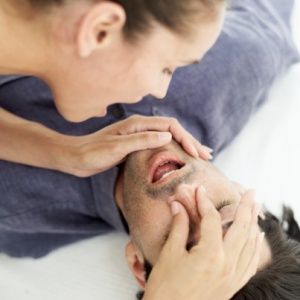
We imagine a public medical emergency looking like a scenario from a CPR class video: an auto mechanic has a heart attack while talking to a client, a construction worker falls off a ladder, a woman eating by herself in a cafeteria quietly has a stroke. In the videos, a bystander always takes notice, enlists help from others, maybe to call an ambulance, administer first aid, or comfort the patient until more help arrives.
But a new study in the American Journal of Public Health comes to the deeply depressing conclusion that only 1 in 39, or 2.5 percent, of people experiencing a health-related emergency in public receive assistance from bystanders before emergency medical responders arrive. And that number is even lower if you're black or live in a poor community.
Advertisement
The first-of-its-kind study looked at data provided to the National Emergency Medical Services Information System (NEMSIS) by medical workers who responded to emergency calls in 2011. The medical staff characterized the type of help, if any, 22,000 patients received before the professional EMTs and paramedics arrived at the scene, ranging from the offer of a glass of water or help opening a medication bottle, to administering CPR or first aid. Because Latinos were not strongly represented in the data, the researchers focused on white and black Americans, and found that while only 4.2 percent of white people got any sort of help during an intense moment of sickness or injury, African-Americans fared much worse, with only 1.8 percent receiving assistance from bystanders.
People in more densely-populated and lower-income regions were also less likely to receive help in an emergency, while those in less-densely populated counties with more average socioeconomic profiles received bystander help more of the time.
"One thing to note is that some of these patients likely didn't get help because there was nobody else there," says lead author Erin York Cornwell, assistant professor in the Department of Sociology at Cornell University. "But we observed low rates of bystander support even in very densely populated areas, which suggests that the low rates of bystander support also reflect situations where bystanders are present but don't directly engage with the patient."
This would be consistent with the "bystander effect," where the more witnesses there are in an emergency situation, the less likely any of them will help, either because the responsibility seems more diffuse, or because the bystanders are taking social cues from all the other people who aren't helping. But York Cornwell thinks there's more to it than that.
"First, the ambiguity of the situation may make people hesitant to help. 'Does that person need help? What should I do? Will I cause harm if I do the wrong thing?' These concerns might make people less likely to intervene," she says. "Good Samaritan laws in place in many jurisdictions in the U.S. give some protection to bystanders who help during an emergency, but not all jurisdictions have these laws and the laws vary in what they cover."
Another reason might be that people are wary of engaging with strangers.
"People simply may not want to interact with someone they don't know, because it can be difficult to reach out or because they may be concerned about their own safety," says York Cornwell.
The research suggests that lower rates of bystander support in high-poverty areas may be due to the lack of organizations and institutions like churches or senior centers, and social spaces like parks, all of which have the potential of leading people to interact and develop a sense of community. Poorer neighborhoods also tend to have higher turnover rates, which means people are less likely to get to know their neighbors.
Advertisement

